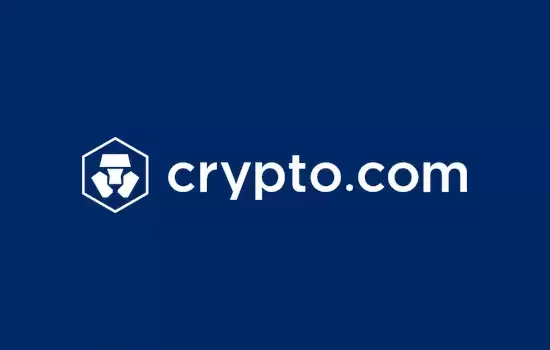 |
|
 |
|
 |
|
 |
|
 |
|
 |
|
 |
|
 |
|
 |
|
 |
|
 |
|
 |
|
 |
|
 |
|
 |
|
Cryptocurrency News Articles
The dark side of market-making: How loan option models are being used to rug pull cryptocurrency projects
Apr 17, 2025 at 12:04 am
This is when a project lends tokens to a market maker, who then uses them to create liquidity, improve price stability, and help secure listings at a cryptocurrency exchange.
A common offering from market makers is the "loan option model," where a project lends tokens to the market maker, who then uses them to create liquidity, improve price stability and help secure listings at a cryptocurrency exchange. In exchange, the market maker promises to return the tokens at a higher price within a year if they aren't able to get them listed on the agreed-upon exchange.
While this model is often framed as a win-win scenario — with the market maker providing liquidity and trading activity to support the token price and the project offering a lower-cost capital solution — in reality, it has been a death sentence for many young projects.
"How it works is that market makers essentially loan tokens from a project at a certain price. In exchange for those tokens, they essentially promise to get them on big exchanges. If they don't, then within a year, they repay them back at a higher price," said Ariel Givner, founder of Givner Law.
"If they do get the tokens listed, then they're able to keep the tokens and sell them back to the project at a higher price than what they paid for them."
But behind the scenes, a number of market makers are using the controversial token loan structure to enrich themselves at the expense of the very projects they're meant to support. These deals, often framed as low-risk and high-reward, can crater token prices and leave fledgling crypto teams scrambling to recover.
"I haven't seen any token really benefit from these market makers. I'm sure there are ethical ones, but the bigger ones I've seen just destroy charts," Givner said.
The market maker playbook
Firms like DWF Labs and Wintermute are some of the best-known market makers in the industry. Past governance proposals and contracts viewed by Cointelegraph suggest that both firms proposed the loan option model as part of their offerings — though Wintermute's proposals call them "liquidity provision" services.
DWF Labs said that it doesn't rely on selling loaned assets to fund positions, as its balance sheet sufficiently supports its operations and liquidity needs across exchanges without relying on liquidation risk.
"Selling loaned tokens upfront can damage a project's liquidity — especially for small- to mid-cap tokens — and we're not in the business of weakening ecosystems we invest in," said Andrei Grachev, managing partner of DWF Labs, in a written response to Cointelegraph's inquiry.
While DWF Labs emphasizes its commitment to ecosystem growth, some onchain analysts and industry observers have raised concerns about the firm's trading practices.
Wintermute did not respond to Cointelegraph's request for comment. But in a February X post, Wintermute CEO Evgeny Gaevoy shared some of the company's operations with the community. He bluntly stated that Wintermute is not a charity but in the "business of making money by trading."
What happens after the market maker gets the tokens?
Jelle Buth, co-founder of market maker Enflux, said that the loan option model isn't unique to the well-known market makers like DWF and Wintermute, and there are other parties offering such "predatory deals."
"I call it information arbitrage, where the market maker very clearly understands the pros and cons of the deals but is able to put it such that it's a benefit. What they say is, 'It's a free market maker; you don't have to put up the capital as a project; we provide the capital; we provide the market-making services,'" Buth said.
On the other end, many projects don't fully understand the downsides of the loan option deals and often learn the latter part of the agreement, he added. Buth advises projects to measure whether loaning out their tokens would result in quality liquidity, which is measured by orders on the book and clearly outlined in the key performance indicators (KPIs) before committing to such deals. In many loan option deals, KPIs are often missing or vague when mentioned.
Cointelegraph reviewed the token performance of several projects that signed loan option deals with market makers, including some that worked with multiple firms at once. The outcome was the same in those examples: The projects were left worse off than when they started.
"We've worked with projects that were screwed over after the loan model," said Kristiyan Slavev, co-founder of Web3 accelerator Delta3.
"It's exactly the same pattern. They give tokens, then they're dumped. That's pretty much what happens."
Not all market-maker deals end in disaster
The loan option model isn't inherently harmful and can even benefit larger projects, but poor structuring can quickly turn it predatory, according to Buth.
A listings adviser who spoke to Cointelegraph on the condition of anonymity underscored that the outcomes depend on how well a project manages its liquidity
Disclaimer:info@kdj.com
The information provided is not trading advice. kdj.com does not assume any responsibility for any investments made based on the information provided in this article. Cryptocurrencies are highly volatile and it is highly recommended that you invest with caution after thorough research!
If you believe that the content used on this website infringes your copyright, please contact us immediately (info@kdj.com) and we will delete it promptly.




























































